Mean Girls
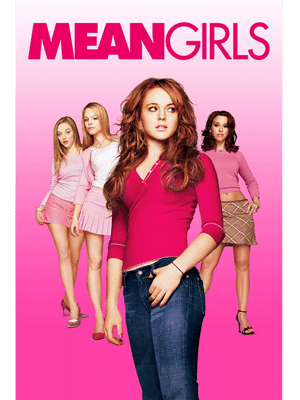
PG-13, 2004, Comedy, 1h 37m
Table of Contents
What Is Mean Girls About?
A homeschooled teenage student moves from Africa to the suburbs of Illinois, only to find herself in the trenches of public high school drama.
Why You Should Watch Mean Girls
Mean Girls is a 2004 teen comedy film that was written by Tina Fey and directed by Mark Waters. The movie stars Lindsay Lohan as Cady Heron, a teenage girl who has recently moved to the United States from Africa and is starting high school. As she navigates the social hierarchy of her new school, Cady becomes caught up in the intrigues and petty drama of a clique of popular girls known as the “Plastics”.
This movie is packed with clever one-liners and funny quips, and the dialogue crackles with energy and wit. The characters are well-developed and unique, and the performances from the cast are spot-on. Lindsay Lohan is charming and likable as Cady, and she is ably supported by a strong ensemble of supporting players, including Amanda Seyfried as the ditzy but lovable Karen, Lacey Chabert as the sweet but manipulative Gretchen, and Rachel McAdams as the ruthless and conniving Regina George.
The portrayal of high school dynamics are also well conveyed in this movie. It offers a clever and insightful look at the ways in which teenagers jockey for position and try to gain acceptance within their peer group. It’s a subject that is familiar to anyone who has been a teenager, and the movie does an excellent job of capturing the complicated and often fraught nature of these relationships.
Another standout of Mean Girls is the strong cast. Lohan giving a standout performance as Cady. She perfectly captures the character’s transformation from awkward outsider to conniving mean girl, and her chemistry with the rest of the cast is electric. The supporting cast is also excellent, with Amanda Seyfried as the ditzy Karen, Rachel McAdams as the ruthless Regina, and Lizzy Caplan as the cynical Janis all delivering memorable performances.
This film does a great job of exploring the complexities of teenage girlhood. Not that I can personally relate, but it does seem to examine the ways in which girls can be both cruel and kind to each other, and the pressure to conform to societal expectations of femininity and popularity. It also touches on issues of bullying, exclusion, and the damaging effects of cliques and social hierarchies.
Mean Girls is an incredibly funny movie, with insightful perspectives on high school life. Excellently acted and written, it’s an absolute must-watch for all fans of teen comedies.
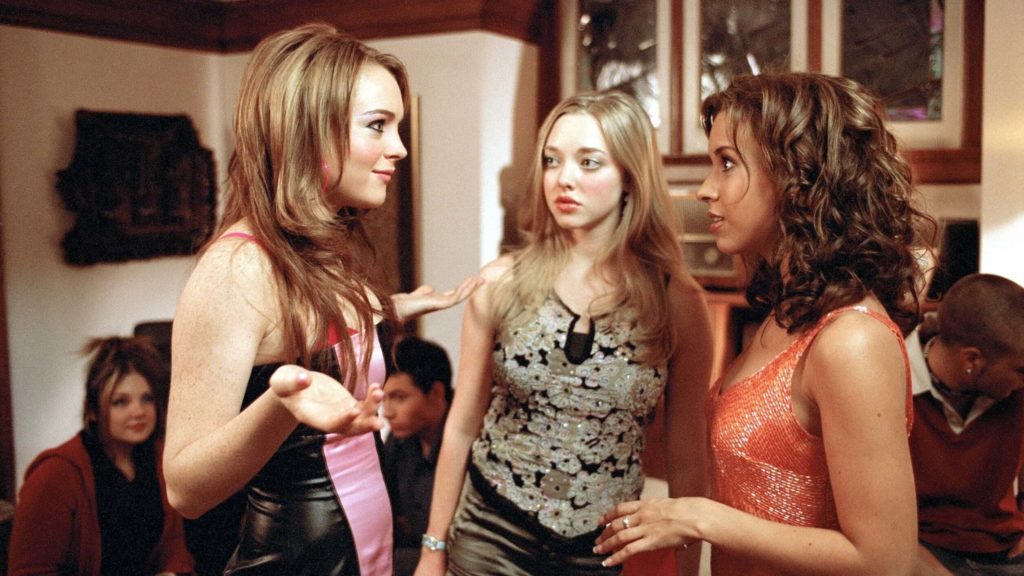
The Theme of Mean Girls
One of the main themes of the film is the idea of social hierarchy and the pressure to fit in. The film depicts the different cliques and social groups that exist within high school and highlights the power dynamics that exist between these groups. The Plastics, the most popular and exclusive girls in school, serve as the primary example of this social hierarchy, as they hold immense power and influence over the rest of their peers. The film also explores the pressure that individuals, especially teenagers, feel to fit in with a particular group or clique in order to be accepted and liked.
Another important theme is the damaging effects of bullying and mean behavior. The film portrays the cruel and exclusive actions of the Plastics and the harm that they cause to those around them. It highlights the importance of treating others with kindness and respect and the long-lasting impact that mean behavior can have on individuals and their self-esteem. The film also touches on the topic of cyberbullying and how it has become a major issue in today’s society, especially among teenagers.
The film also explores the idea of individuality and self-discovery. Through the character of Cady, the film shows that it is important to be true to oneself and not to conform to the expectations and norms of society or a particular group. Cady’s journey towards self-discovery and her realization that she doesn’t have to fit in with the Plastics in order to be popular and loved highlights the importance of embracing one’s individuality and standing up for what is right.
The last theme Means Girls touches on is female empowerment. The film portrays the girls coming together to take down the Plastics and reclaim their power, showing that women can be strong, supportive, and empowering of each other. The film also highlights the importance of female friendship and how women can support each other and work together to overcome challenges and obstacles.
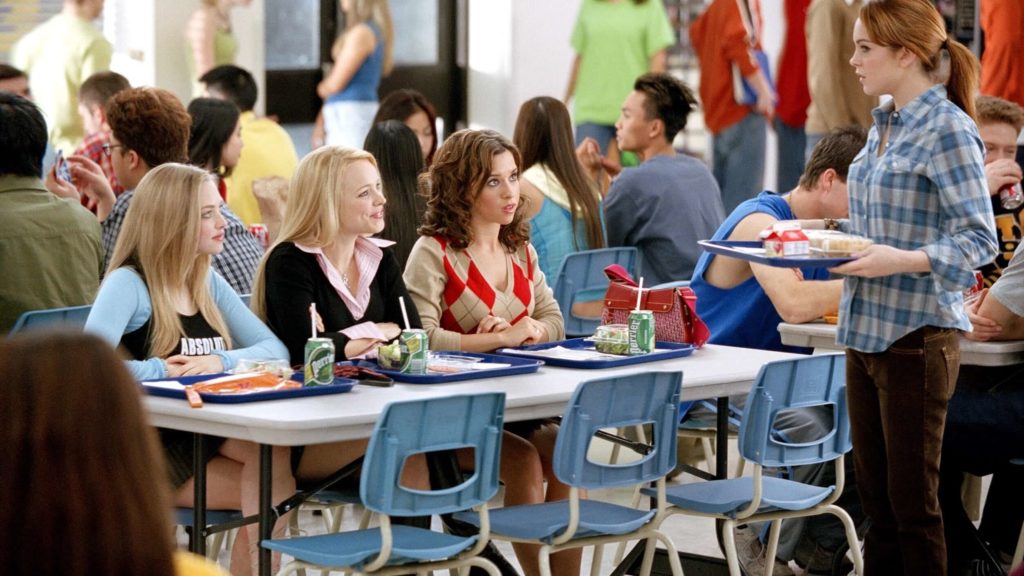
The Cinematography of Mean Girls
The 2004 teen comedy “Mean Girls,” directed by Mark Waters and written by Tina Fey, isn’t just recognized for its witty script and memorable lines; its cinematography, executed by Daryn Okada, played a vital role in effectively conveying the story. Through the lens, the movie communicates the turbulent world of high school life, portraying the complexities of teenage hierarchies and personal transformation.
From the onset, “Mean Girls” establishes a vibrant color palette consistent with the tone of a teen comedy while also subtly working to underline the shifting moods and allegiances of the characters. For instance, the Plastics, the popular girl clique, have a distinct color signature, primarily revolving around pinks and whites, showcasing their exclusivity and apparent innocence, albeit with a hint of cunning. In contrast, when Cady Heron first enters North Shore High School, she wears natural and muted tones, signifying her initial outsider status and naivety.
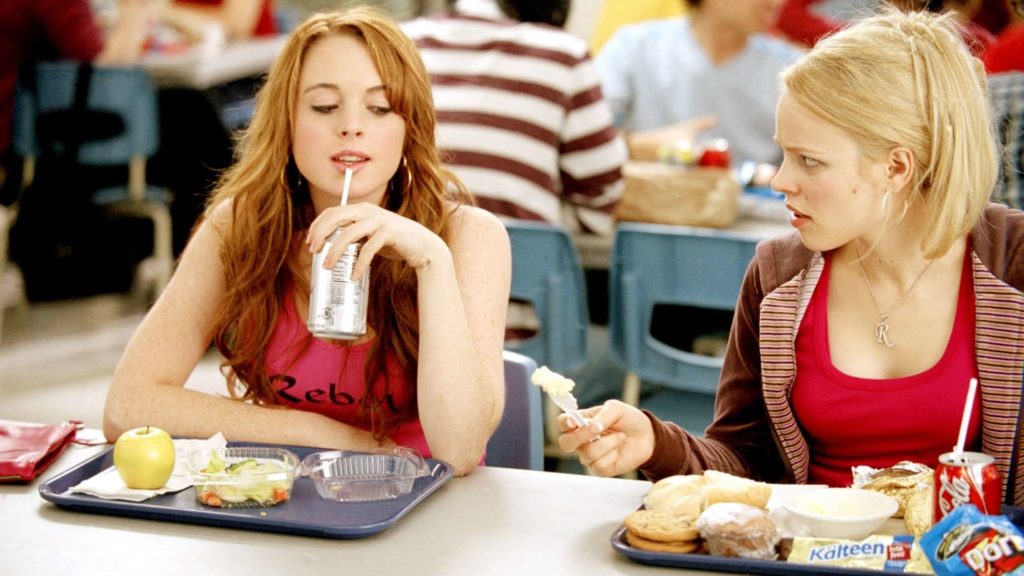
Camera movements and angles are employed thoughtfully to reflect the movie’s thematic elements. One notable technique is the use of high-angle shots, particularly during scenes where characters feel threatened or diminished. An example is when Cady feels overwhelmed on her first day of school; the camera’s top-down angle makes her appear smaller, emphasizing her vulnerability in the new environment. Conversely, low-angle shots are used to establish dominance or superiority, often seen when Regina George, the primary antagonist, exerts her influence over others.
The choice of framing is crucial in “Mean Girls,” and it often tells a story beyond the immediate action. Close-ups are frequently used to capture the nuanced facial expressions of characters, allowing audiences to connect deeply with their internal emotional states, whether it’s Regina’s subtle smirks indicating mischief or Cady’s reactions as she navigates the complicated social terrain. On the other hand, wide shots, especially those in the school’s cafeteria, provide a tableau of high school life, highlighting the various cliques and the distance between them.

Transitional sequences in the movie often use montage techniques, offering a fast-paced look into the events’ progression, usually complemented by voiceovers from Cady. These sequences efficiently condense time and provide a humorous outlook on Cady’s journey from an innocent newcomer to a central figure in the high school’s drama-filled landscape. One memorable montage involves the spread of rumors, showcasing the rapid and destructive nature of high school gossip.
Lighting, while generally consistent with a naturalistic look appropriate for the teen comedy genre, occasionally leans into dramatic contrasts to emphasize specific moments. Scenes involving confrontations or revelations have pronounced shadows, allowing the tension to be felt visually. An example is the scene where Cady realizes she has become just like the Plastics; the lighting emphasizes the internal conflict she undergoes.
Mean Girls is not merely a backdrop for its narrative but an integral component that amplifies its themes and character arcs. Through a combination of color, camera angles, framing, montage, and lighting, the film provides a visually engaging representation of high school dynamics while accentuating the humor and drama of its storyline. It’s a testament to how visual storytelling, even in genres not typically associated with standout cinematography, can significantly enhance a movie’s impact.
The Soundtrack of Mean Girls
Mean Girls offers various popular songs from the early 2000s, including:
“Jingle Bell Rock” by Bobby Helms
“He Likes Boys” by Karen Kamon
“I’m Just a Girl” by No Doubt
“Stupid Girls” by Pink
“Shake a Tail Feather” by The Five Du-Tones
“Where Is Your Boy” by Fall Out Boy
“It’s All About Me” by Meaghan Martin
“Baby One More Time” by Britney Spears
“Hot Child in the City” by Nick Gilder
“Wannabe” by Spice Girls
It also features an original score composed by Rolfe Kent. You can listen to the majority of the soundtrack below.
The Cast of Mean Girls
- Lindsay Lohan as Cady Heron – the protagonist who tries to navigate the social hierarchy of high school after being homeschooled in Africa.
- Rachel McAdams as Regina George – the leader of the Plastics, the most popular clique in school.
- Tina Fey as Ms. Norbury – a math teacher who tries to bring peace to the school.
- Amanda Seyfried as Karen Smith – a member of the Plastics known for her airheadedness.
- Lacey Chabert as Gretchen Wieners – another member of the Plastics who is trying to make “fetch” happen.
- Lizzy Caplan as Janis Ian – an outcast who helps Cady take down the Plastics
The Filmmakers of Mean Girls
- Director: Mark Waters
- Screenplay: Tina Fey
- Producers: Lorne Michaels, Tina Fey, Stuart Thompson, Marykay Powell
- Music: Rolfe Kent
- Cinematography: Daryn Okada
Tina Fey wrote the screenplay for “Mean Girls” and is one of the film’s producers. Mark Waters directed the film, while Daryn Okada handled cinematography. The film’s music was composed by Rolfe Kent, and “Saturday Night Live” creator Lorne Michaels was also one of the film’s producers.

Crunch Wrap Supreme

Inspiration
“I CAN’T GO TO TACO BELL, I’M ON AN ALL-CARB DIET. God, Karen, you are SO stupid!” – Regina George
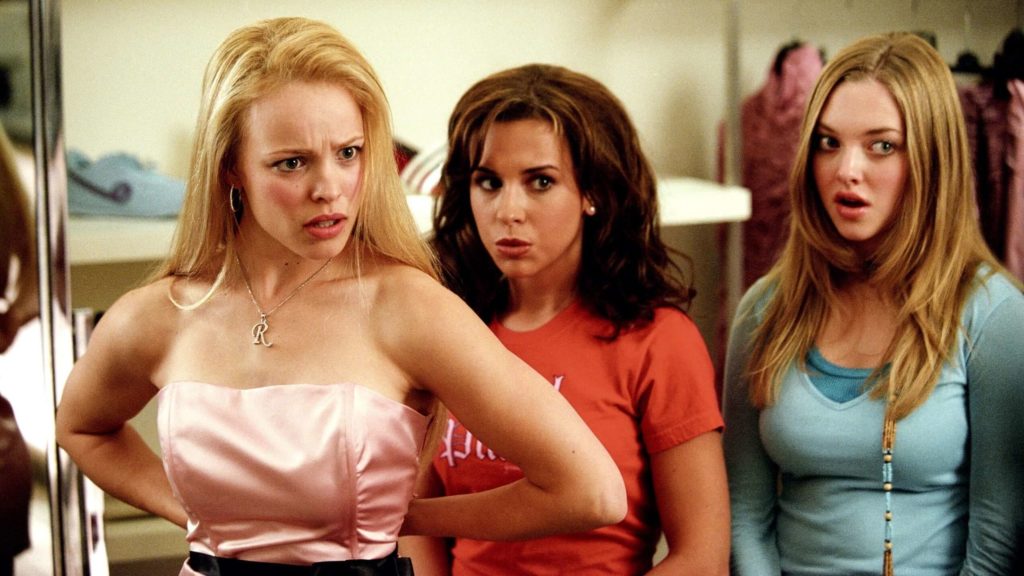
More About Mean Girls
This movie does beg the question why teenage girls are so mean.
Teenage girls can exhibit mean behavior for a variety of reasons. One of the main reasons is insecurity. During the teenage years, individuals are often insecure about their appearance, popularity, and relationships, which can lead to them acting out in negative ways towards others.
Another reason for mean behavior among teenage girls is the pressure to fit in. Teens have a strong desire to fit in with their peers and be accepted, and this can result in behaviors such as bullying or exclusion of others. Teenagers are still developing their sense of empathy, and may not fully understand the impact of their actions on others. This lack of empathy can contribute to mean behavior. Teenagers are also still developing their sense of self and may make poor decisions or engage in negative behavior due to immaturity. This is something that even adults struggle with.

